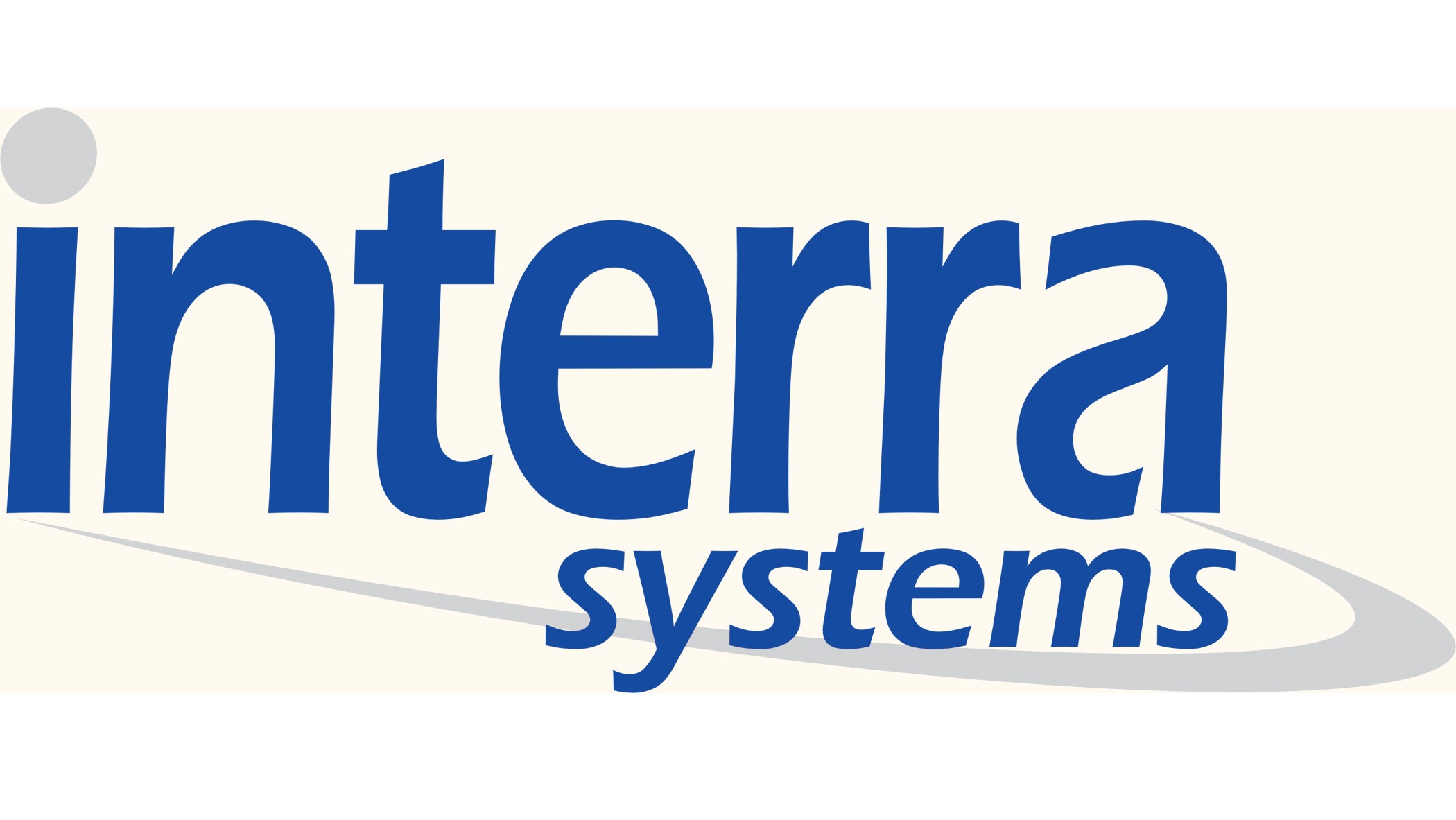
Video compression plays a pivotal role in modern media streaming, influencing everything from the quality of the content we enjoy, to the efficiency of data transmission. One of the latest advancements in this realm is the AV1 video compression format. As content creators and distributors adopt this new format, the demand for precision in AV1 analysis has never been more pronounced. This is where Interra Systems’ VEGA AV1 Analyzer steps into the spotlight. Part of the VEGA Media Analyzer (VMA) platform — designed for in-depth analysis of encoded media — it provides an indispensable solution for developers, engineers, and industry professionals seeking to unravel the complexities of AV1-encoded content.
In this article, we delve into the pivotal role of Interra Systems’ VEGA AV1 Analyzer, how it empowers users to decode the AV1 codec, and why it stands out as an essential tool in the arsenal of those striving for optimal video compression.
The Evolution of Video Compression
Video compression has come a long way since the early days of H.264 — also known as Advanced Video Coding (AVC) — which became the standard for streaming high-quality videos. This was succeeded by H.265 — or High Efficiency Video Coding (HEVC) — which brought further improvements in compression efficiency and video quality. AV1, the latest in this lineage, was introduced to address the limitations of previous codecs. An open, royalty-free video compression format developed by the Alliance for Open Media (AOMedia), its aim is to achieve superior compression efficiency without compromising quality.
Some of the well-recognized benefits of AV1 include:
1. Compression Efficiency:
AV1 offers superior compression efficiency compared to H.264, and significantly reduces file sizes compared to HEVC, all while maintaining similar or even better video quality.
2. Royalty-Free and Open Source:
HEVC and H.264 involve licensing fees and royalty payments, which limit accessibility for smaller organizations and startups. AV1, however, provides a royalty-free and open-source alternative, promoting widespread adoption and innovation across the industry.
3. Improved Scalability and Adaptability:
AV1 is designed to adapt to various devices and network conditions, making it a great choice for streaming on different platforms.
Significance of the VEGA AV1 Analyzer for Compliance, Debugging, and Quality
As encoder developers and media companies navigate the complexities of AV1 encoding, the need for a comprehensive solution that simplifies compliance and quality assessment has become critical. At a minimum, conformance testing is required to assure compliance with the AV1 specification.
Apart from bitstream analysis, rate-distortion optimization, and motion estimation and compensation, media professionals require tools that help them understand the transform coding techniques and develop quality metrics to assess the visual quality of encoded videos. For example, they might need to consider how AV1-encoded content integrates with streaming protocols and adaptive bitrate technologies. Moreover, exploring and integrating optimization techniques is crucial for enhancing both the speed and efficiency of encoding, leading to the development of a more effective encoder.
Exploring Interra Systems’ VEGA AV1 Analyzer: Features and Benefits
Amidst the dynamic landscape of media and video encoding, where innovation is paramount, Interra Systems has been a pioneering force dedicated to helping encoder developers and media companies provide better quality video. Interra Systems’ VEGA AV1 Analyzer has been meticulously written to make it easy for users to analyze AV1 content for compliance and quality. The analyzer provides offline analysis of video, in which it takes an AV1-encoded bit stream and provides frame-by-frame syntax analysis of the stream.
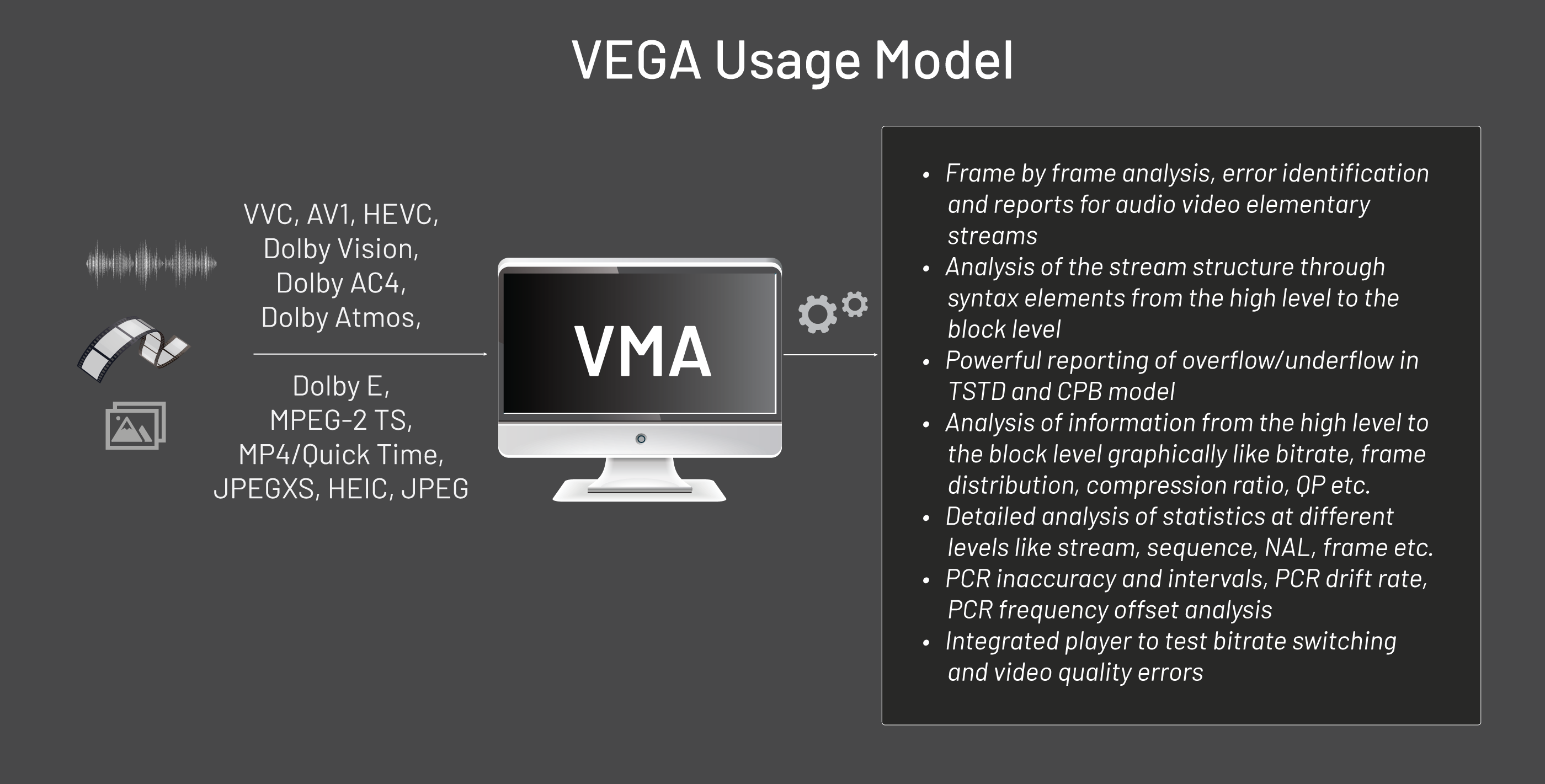
Let's look at some of the key features and benefits that the VEGA AV1 Analyzer offers.
1. Stream Compliance Assurance:
Verification of AV1 Standards: The VEGA AV1 Analyzer ensures that encoded streams adhere to the AV1 standard, preventing costly compliance issues and ensuring compatibility with AV1-compliant decoders.
2. Debugging Capabilities:
Frame-Level Analysis: Detailed frame-level data allows developers to pinpoint issues such as artifacts, frame drops, or quality degradation.
Bitstream Analysis: In-depth bitstream analysis assists in identifying specific issues related to encoding settings and configurations.
3. Troubleshooting Support:
Error Localization: When errors occur, the analyzer pinpoints their exact location, streamlining the troubleshooting process and reducing downtime.
Error Reporting: Clear and concise error reports offer detailed information about the nature and source of issues, aiding in quick resolution. These reports can be shared across relevant teams, fostering collaboration, and ensuring that the entire workflow benefits from issue resolution.
Problem Isolation: Troubleshooting tools help isolate problems, whether they stem from encoder settings, network issues, or decoding-related challenges.
4. Comprehensive Quality Assessment:
Visual and Audio Quality Metrics: The VEGA AV1 Analyzer offers a suite of quality metrics to evaluate the visual and audio quality of encoded streams, ensuring content meets expected standards.
5. Efficiency and Cost Savings:
Faster Issue Resolution: Swift issue detection and resolution reduce development and operational costs associated with troubleshooting and quality assurance.
Optimized Encoding: The ability to fine-tune encoding parameters based on analyzer feedback leads to efficient use of resources and bandwidth.
6. Multi-Core Analysis: Depending on the hardware used, multi-core analysis support allows user to achieve 2-3x better performance.
The VEGA AV1 Analyzer provides various stream views for faster analysis of audio-video and data information.
Access Unit View: Allows users to examine the parsing and decoding parameters of frames at the block level, like SBs, MBs, and TBs such as QP, coded bits, MV, prediction mode, interpolation, and more. They can also debug the frame at the block level, get a list of all conformance errors at the block level, and examine the efficiency of the encoder with partitioning overlayed on the picture.
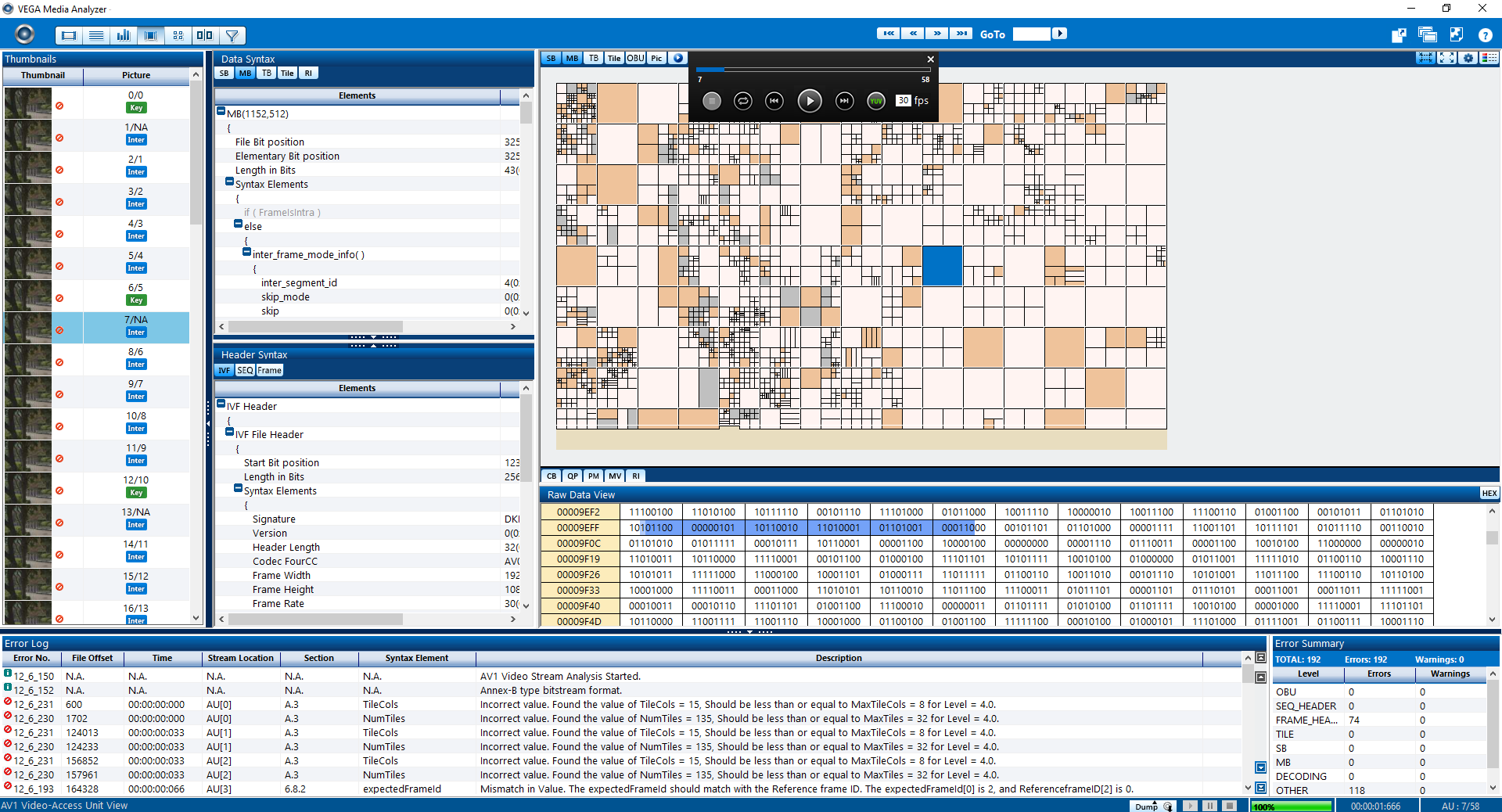
Player View: A video playback feature for block partitioning, motion vectors, and frame decoding allows users to debug the variation of block partitioning and motion in frames throughout the stream.
Graph View: Displays various parameters such as compression ratio and OBU size in graphical form for better visualization. Through these graphs, users can validate the threshold limit of the supported parameters.
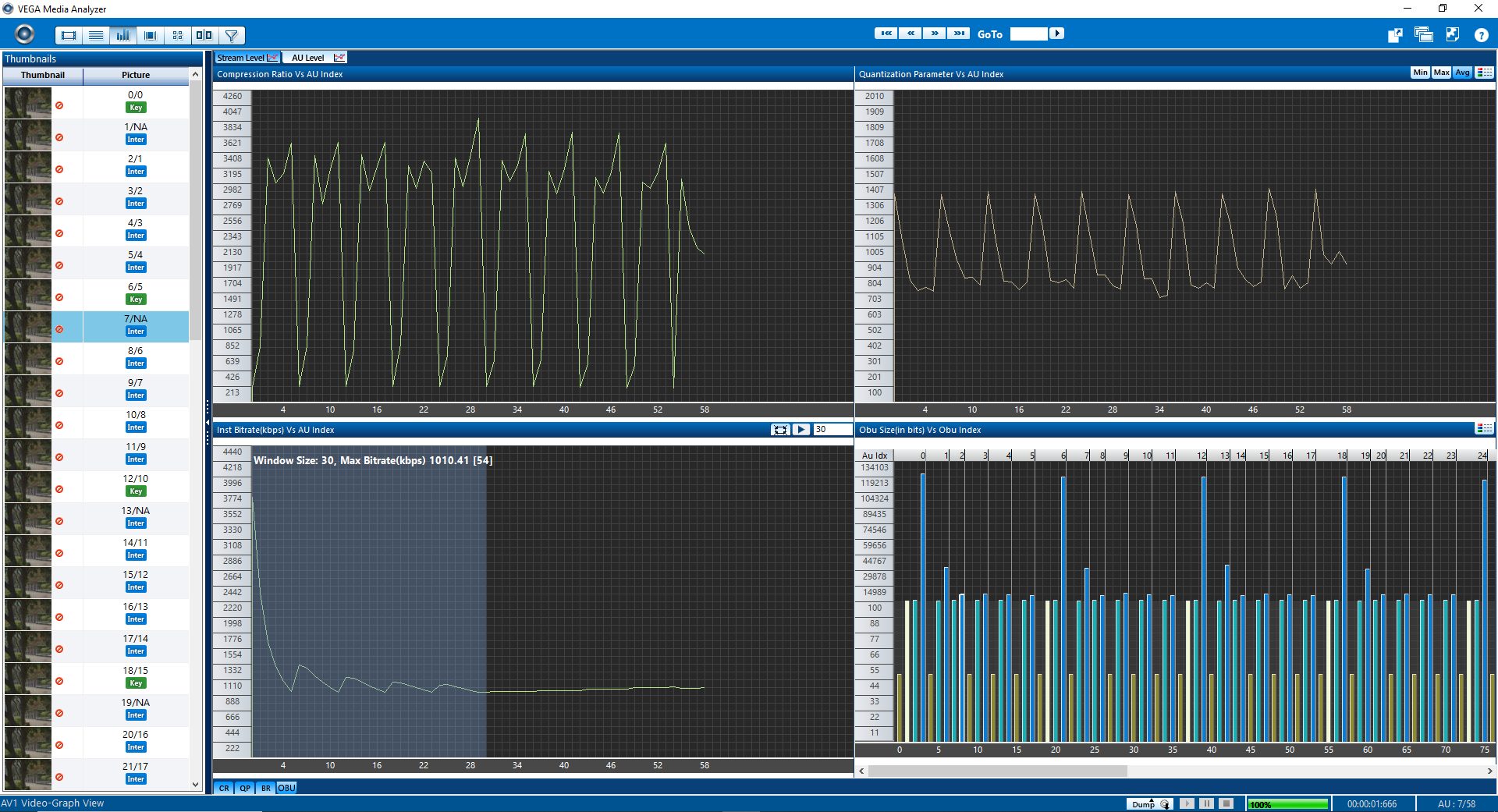
Frame Buffer View: Shows the frame buffer status before and after decoding of the picture, which allows users to examine the frame buffer management process before and after insertion of a frame.
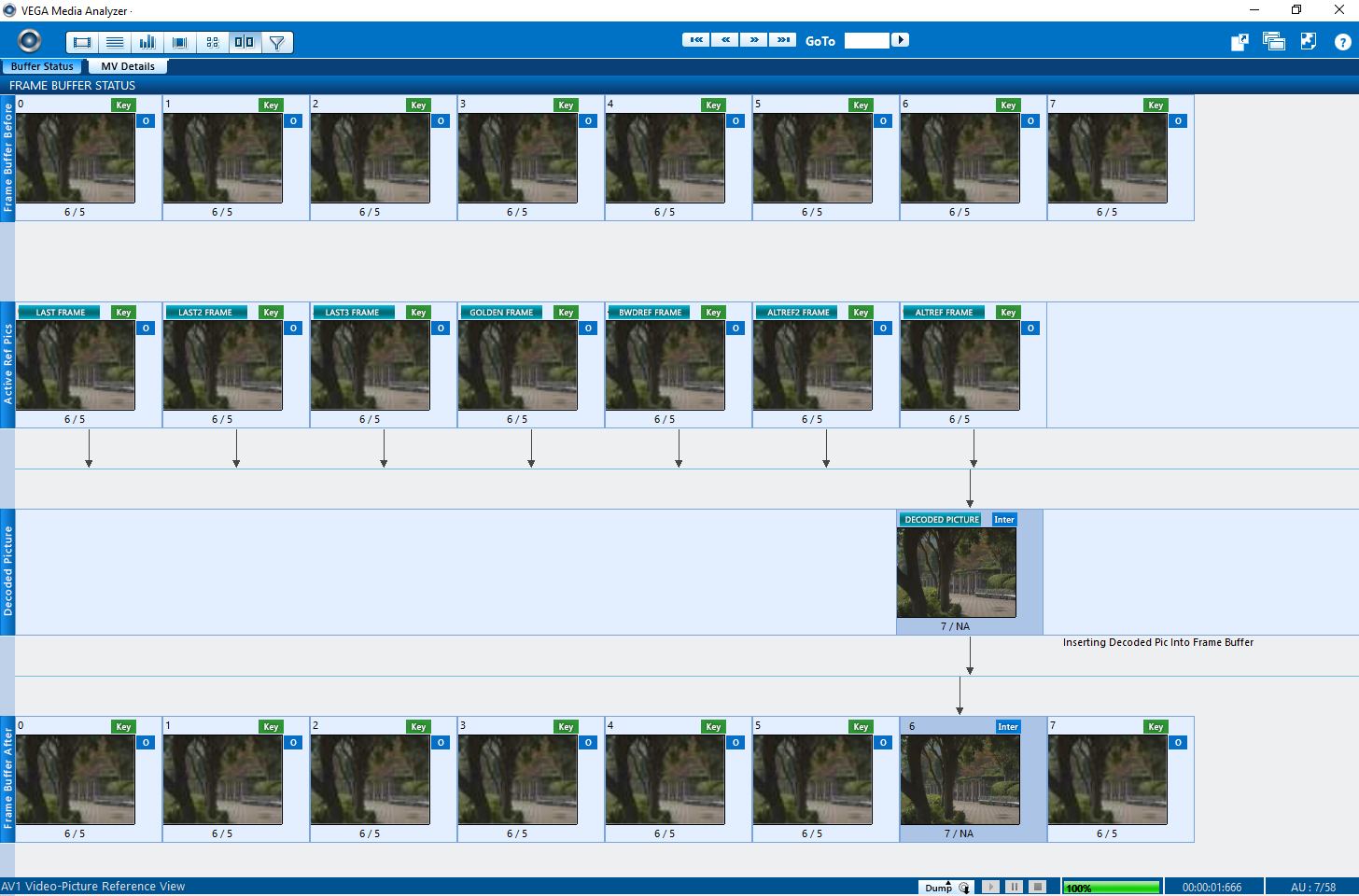
Motion Vector View: Shows motion vectors and reference pictures, allowing users to examine the motion and exact location of a block in a reference picture from where prediction is taking place.
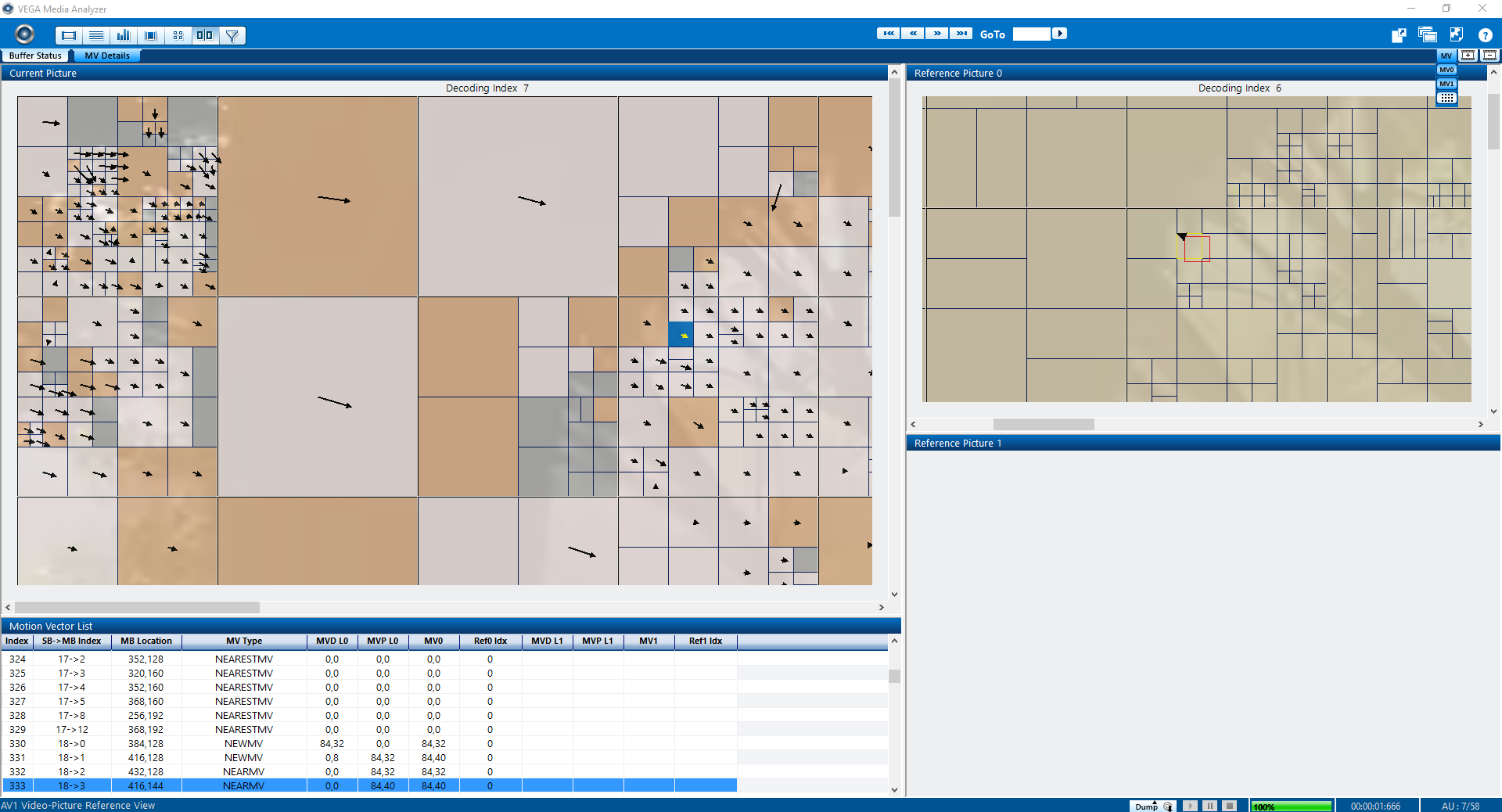
Coefficient View: Users can examine the picture reconstruction process through pixel values and decoding pictures at different stages of the decoding process, such as residues, scale residue, inverse transform, and predicted and final values.
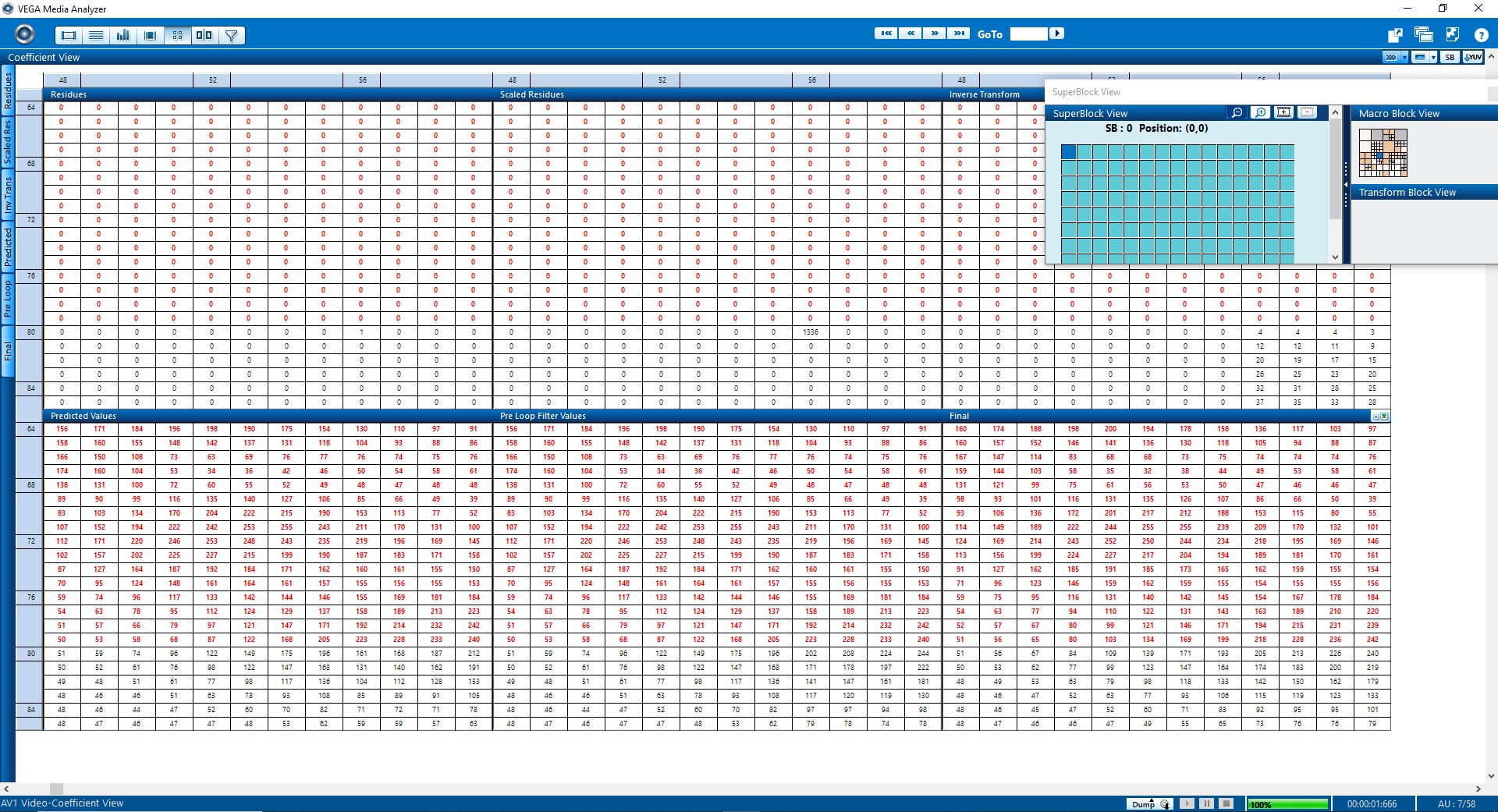
Filtering View: Allows users to examine the loop filter process for edge strength and pixel values after applying the horizontal and vertical loop filter process.
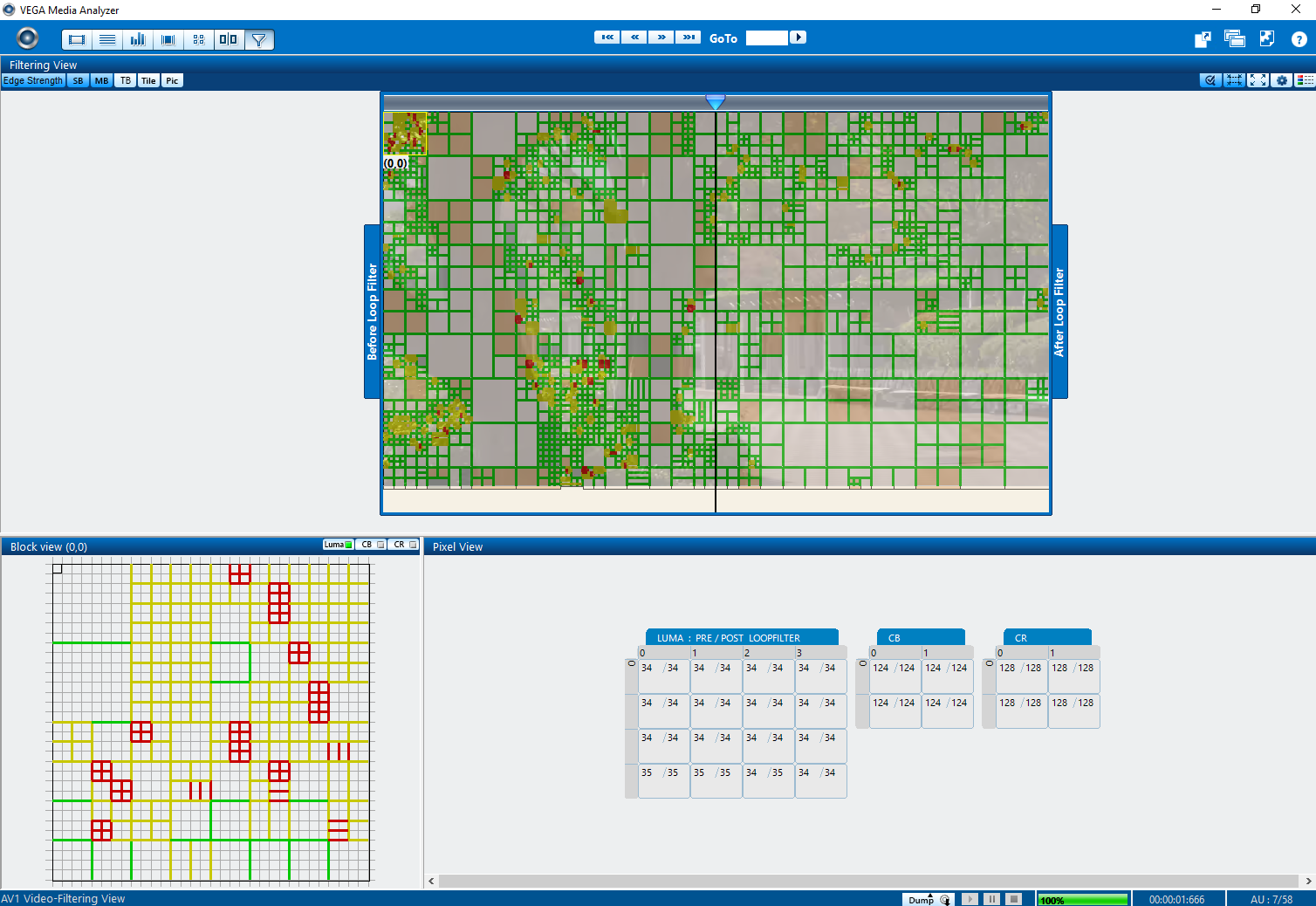
Error Logs: A consolidated error log report is created after analyzing the file for future reference.

The AV1 compression standard is continuing to evolve and promises to reshape the landscape of video compression and streaming – providing a superior viewing experience for audiences worldwide. With the increased adoption of AV1 by media companies, other players in the ecosystem involved with content creation, processing, and delivery will be required to add support for the codec. The VEGA AV1 Analyzer plays a crucial role for encoder developers and media companies by ensuring that AV1-encoded streams adhere to industry standards, while optimizing both the quality and efficiency of the encoding process. This will lead to cost savings, improved content quality, and a smoother, more efficient workflow, which ultimately benefits both content creators and their audiences.
Whether it’s an encoder developer or a video service provider, Interra Systems is committed to helping achieve encoding excellence. The company offers a range of video analyzers that support formats including H.264, HEVC, VVC, Dolby Vision, Atmos, MPEG-2 TS, JPEG-XS, ABR, and more, which are tailored to meet a number of critical requirements within the media industry.
To explore how Interra Systems’ VEGA AV1 Analyzer can empower video compression analysis, please contact us at info@interrasystems.com or visit https://www.interrasystems.com/vega-analyzer.php. You can unlock 25% off on VEGA Media Analyzer until December 31, 2023.
About Interra Systems
Interra Systems helps OTT service providers, broadcasters, telcos, and other media companies deliver high-quality video, while streamlining quality control (QC), video analysis, and monitoring processes across the entire media supply chain. The company’s industry-leading solutions are built on software-defined architecture and support numerous deployment scenarios to meet the needs of modern media workflows today — and future-proof them for tomorrow.
The company’s award-winning product portfolio has driven mission critical deployments of QC and monitoring across the globe. This includes BATON, an enterprise-class, automated file-based QC system; BATON Captions for the efficient creation and distribution of video captions; the ORION family of content monitors for 24/7 quality assurance of linear and OTT streams, and VEGA media analyzers for in-depth video inspection, debugging, and standards compliance.
Interra Systems continues to thrive as it pursues media quality assurance using cutting-edge technologies for optimum quality of service and quality of experience.







